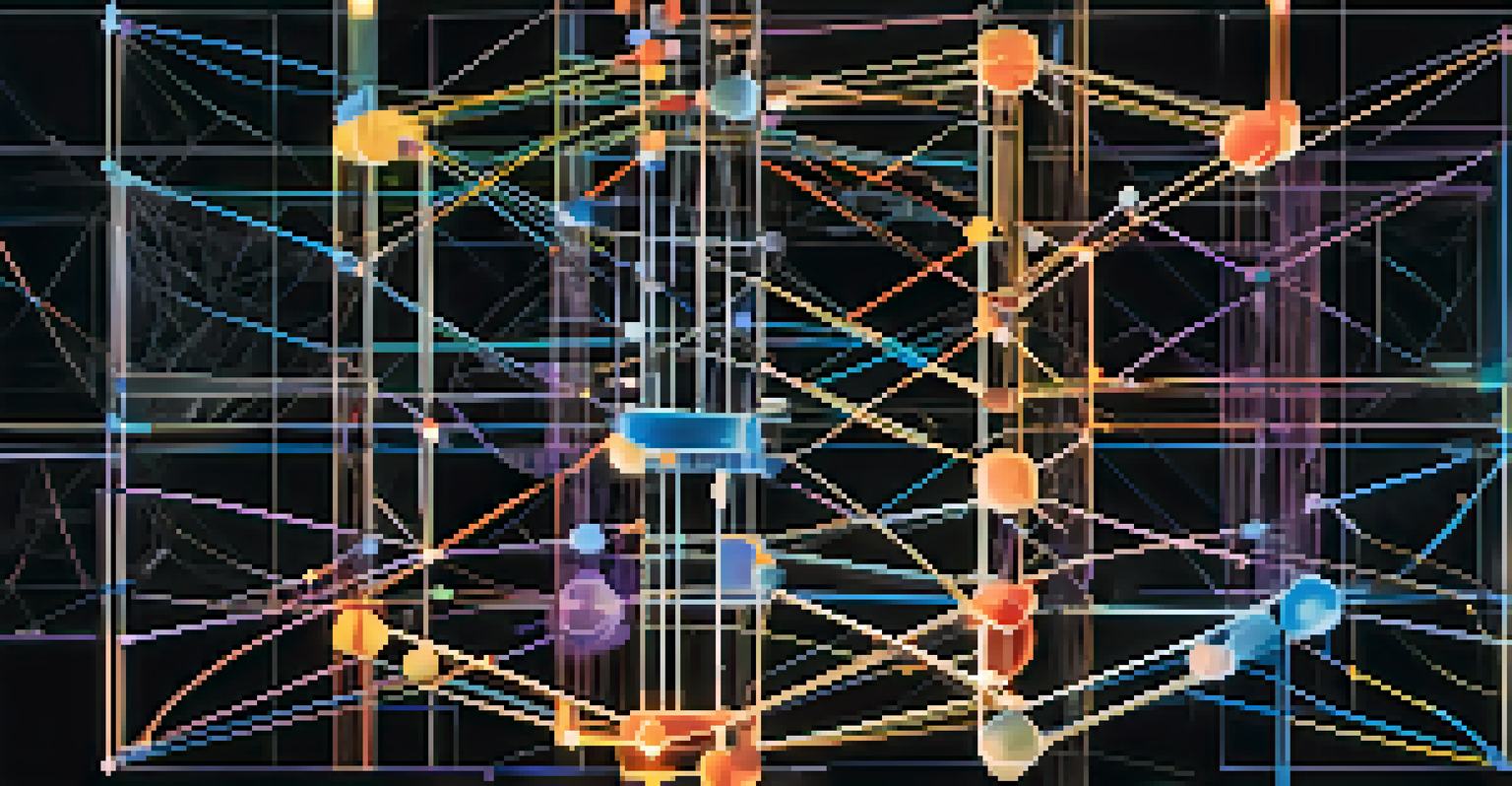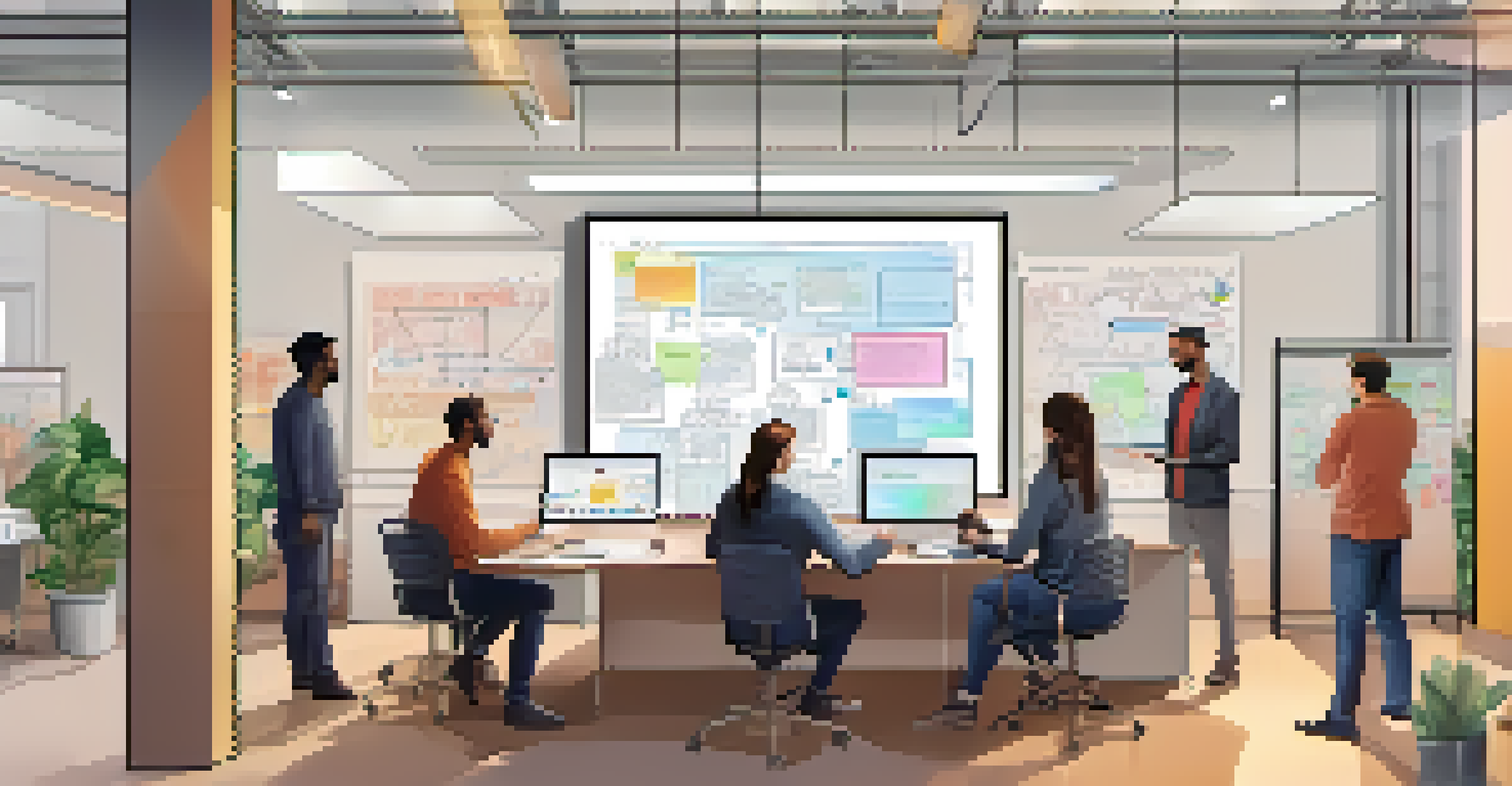Event-Driven Architecture in Microservices Explained

What is Event-Driven Architecture in Microservices?
Event-Driven Architecture (EDA) is a design paradigm that focuses on events as the primary means of communication between microservices. In this model, services respond to events generated by other services, leading to a more reactive and scalable system. For instance, when a user places an order, an 'order placed' event is triggered, prompting various services to react accordingly, such as inventory management and shipping.
Event-driven architecture is the future of building scalable and responsive applications.
This approach contrasts with traditional request-response models, where services await specific requests to act. EDA promotes decoupling, allowing services to operate independently and enhancing flexibility. For example, if the inventory service needs to be updated, it can do so without impacting the order service directly.
Overall, EDA helps organizations build robust and responsive systems by enabling asynchronous communication. This structure not only streamlines interactions but also improves resilience, making it easier to adapt to new business requirements.
Key Components of Event-Driven Architecture
At the heart of EDA are key components such as events, event producers, and event consumers. Events are significant changes in state, like a user signup or a product update. Event producers are the services that generate these events, while event consumers are the services that listen for and respond to them, creating a dynamic ecosystem.

Additionally, message brokers often play a crucial role in facilitating communication between services. They act as intermediaries that store and forward events, ensuring that consumers receive them even if they are temporarily offline. This enhances reliability and allows systems to maintain a level of performance under varying loads.
Key Benefits of Event-Driven EDA
Event-Driven Architecture enhances scalability, responsiveness, and resilience by allowing services to operate independently and react to events in real-time.
Understanding these components is vital for implementing EDA effectively. They work together to create an ecosystem where services can evolve independently, leading to improved maintainability and operational efficiency.
Benefits of Adopting Event-Driven Architecture
One of the major benefits of adopting an event-driven architecture is increased scalability. Since services operate independently, they can be scaled up or down based on demand without affecting the entire system. For example, if a shopping platform experiences a surge in traffic during a sale, only the order processing service needs to scale, while others remain unaffected.
In a world where everything is connected, the ability to react to events in real-time is crucial for success.
Moreover, EDA enhances responsiveness. By processing events as they occur, services can react in real-time, improving user experience. Imagine an online banking application that instantly notifies users of transactions; this immediate feedback is made possible through event-driven designs.
Lastly, EDA promotes resilience within applications. If one service fails, others can continue to function, thanks to the loose coupling of services. This design ensures that systems remain operational even during outages, allowing for better uptime and reliability.
Challenges of Implementing Event-Driven Architecture
While EDA offers numerous benefits, it comes with its own set of challenges. One major concern is the complexity of managing and monitoring events across multiple services. With numerous events flowing through the system, it can be difficult to track and debug issues, leading to potential delays in addressing problems.
Another challenge is data consistency. Since services operate asynchronously, maintaining a consistent state across different services can be tricky. For instance, if an order is placed and the inventory is updated simultaneously, ensuring that both services reflect the same data requires careful design and implementation.
Challenges in EDA Implementation
Implementing EDA can introduce complexities in managing events and ensuring data consistency across services, requiring careful planning and the right tools.
Lastly, developers may need to adopt new tools and frameworks to support event-driven systems. This can involve a learning curve and necessitate changes in existing workflows, which may slow down initial implementation. However, these challenges can be mitigated with proper planning and tooling.
Common Use Cases for Event-Driven Architecture
Event-driven architecture is particularly well-suited for applications that require real-time data processing. For example, social media platforms often use EDA to push notifications to users as events occur, such as new friend requests or messages. This keeps users engaged and informed instantly.
Another common use case is in e-commerce applications, where transactions and user interactions generate a flurry of events. By adopting EDA, these platforms can manage inventory levels, trigger personalized marketing campaigns, and enhance customer support all in real-time, leading to a more seamless shopping experience.
Financial services also benefit from EDA, as it allows for real-time fraud detection and transaction monitoring. By processing events quickly, organizations can identify suspicious activity and respond before significant damage occurs. This proactive approach is essential in today’s fast-paced digital landscape.
Popular Technologies Supporting Event-Driven Architecture
Several technologies support the implementation of event-driven architecture, making it easier for organizations to adopt this model. Apache Kafka, for instance, is a widely-used distributed event streaming platform that allows for building real-time data pipelines and streaming applications. Its ability to handle large volumes of event data makes it a popular choice among developers.
Another well-known tool is RabbitMQ, a message broker that facilitates communication between services in an event-driven system. By queuing events and ensuring they reach their intended consumers, RabbitMQ helps maintain the integrity and reliability of service interactions.
Technologies Supporting EDA
Tools like Apache Kafka and RabbitMQ, along with cloud services such as AWS Lambda, facilitate the adoption of Event-Driven Architecture by streamlining event handling.
Furthermore, cloud providers like AWS and Azure offer event-driven services that simplify the architecture setup. Services such as AWS Lambda and Azure Functions allow developers to run code in response to events, reducing the need for managing server infrastructure and enabling rapid development.
Best Practices for Implementing Event-Driven Architecture
To successfully implement event-driven architecture, organizations should focus on establishing clear event schemas. Defining the structure and content of events ahead of time helps maintain consistency and improves communication between services. This practice can prevent misunderstandings and reduce debugging time down the line.
Additionally, implementing robust monitoring and logging is essential for troubleshooting in EDA. By tracking events and their processing status, developers can identify bottlenecks and issues more effectively. This proactive approach not only enhances system performance but also boosts overall reliability.

Lastly, adopting a gradual approach to EDA can help teams transition smoothly. Starting with a few services and gradually expanding the architecture allows organizations to learn and adapt without overwhelming their existing systems. This phased strategy can lead to a more successful and sustainable implementation.